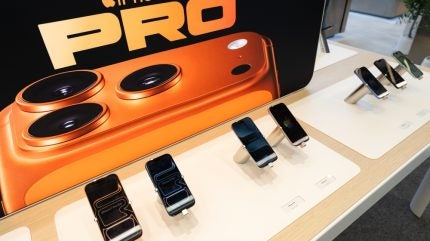
Rising mobile phone theft is reshaping retail economics and store operations, with stolen iPhones moving quickly through international resale routes despite tougher on-device security.
UK retailers estimate shoplifting losses at a record £2.2bn in 2023/24, while police say London alone recorded roughly 80,000 stolen phones last year—pressure that translates into higher costs, new security routines and strained staff morale.

Discover B2B Marketing That Performs
Combine business intelligence and editorial excellence to reach engaged professionals across 36 leading media platforms.
How stolen phones move through a global pipeline
Recent police operations illustrate the scale and speed of the trade.
In October 2025, the Metropolitan Police disrupted a network suspected of smuggling up to 40,000 stolen phones—mostly iPhones—from the UK to China over 12 months, a flow investigators linked to as much as 40% of London thefts in that period.
The case began when a shipment of about 1,000 iPhones bound for Hong Kong was intercepted near Heathrow.
Security agencies say many devices leave the country quickly, with disposal routes reported to China, Dubai, Algeria, Morocco, Romania and Bulgaria.

US Tariffs are shifting - will you react or anticipate?
Don’t let policy changes catch you off guard. Stay proactive with real-time data and expert analysis.
By GlobalDataA parliamentary briefing and London policing updates indicate around three-quarters of phones stolen in the capital are moved abroad. Seizures have included consignments of 1,000 handsets at Heathrow, and officials have tied street snatches by e-bike riders to these export pipelines.
IMEI blacklisting and “Find My” tracking complicate domestic resale, so organised retail crime groups exploit gaps in cross-border enforcement.
The GSMA urges universal participation in device registries so stolen IMEIs are blocked across networks, but coverage varies by market, sustaining demand overseas for locked phones that can be stripped for parts or re-programmed.
Rising costs and store responses
For retailers, mobile phone theft sits within broader “retail shrink”. US data show shoplifting incidents and dollar losses have climbed markedly since 2019, echoing trends reported by British chains.
The Co-op Group, for example, booked £80m in retail crime losses in 2024—over half its adjusted operating profit—underscoring how theft pressures pricing and investment decisions.
Stores are reacting with higher-touch controls on high-value products: locked cases, staffed access to phone displays, and tighter entry management at peak times.
Yet these measures carry trade-offs. Consumer surveys show that a notable share of shoppers walk away or switch retailers when faced with locked merchandise, and analysts warn that over-securing can depress sales or push customers online.
Front-line conditions are also changing. Industry surveys describe increased threats and abuse towards staff as they manage theft-prone categories, and UK retailers collectively report more than 20 million theft incidents a year.
These trends contribute to stress, absences and turnover, adding hidden costs beyond the lost stock.
What works—and what to watch
Device-level protections help, but offenders adapt. Apple’s Activation Lock and the newer Stolen Device Protection add friction for thieves trying to reset devices or change credentials away from familiar locations.
Those features have narrowed opportunities for quick domestic resale, but criminal groups have pivoted to exports and to harvesting credentials before victims can lock accounts.
Policymakers and carriers therefore focus on shrinking overseas demand through faster IMEI blocking that propagates internationally, plus joint work with customs to intercept bulk shipments.
For retailers, the emerging mix pairs smarter physical security with service design that minimises friction for legitimate shoppers.
Examples include staffed “assisted selling” for phones and accessories, digital-access fixtures that open quickly via staff devices, and data-led replenishment to flag anomalies without locking every product behind plexiglass—approaches recommended by retail operations analysts to reduce shrink without sacrificing conversion. Surveys suggest these alternatives retain more sales than blanket lock-ups.
Outlook: coordinated action to cool demand for stolen phones
Evidence from recent UK policing, retailer surveys, and US shrink data points to a clear trend: mobile phone theft is a significant driver of retail losses and operational change.
The most promising path to relief blends faster IMEI blocking, consistent international participation in device blacklists, store-level risk design that avoids over-locking, and targeted policing of export pipelines.
Where these steps align, the resale value of stolen phones falls—and incentives for organised retail crime with it.





